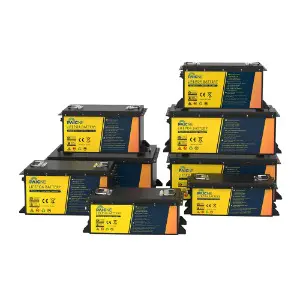Lithium Iron Phosphate Battery (LiFePO4) is renowned for its safety, thermal stability, and long cycle life, making it a popular choice for electric vehicles, renewable energy storage, and portable electronics. However, one of the key metrics in evaluating battery performance is energy density, which determines how much energy can be stored per unit weight or volume. Comparing LiFePO4 with other lithium-ion chemistries reveals both its advantages and its limitations.

While LiFePO4 may not always match the high energy density of certain lithium-ion chemistries, it offers significant advantages in stability and safety. Its lower energy density is offset by good thermal and chemical stability, which reduces the risk of thermal runaway, overheating, or combustion. For applications where safety is paramount, such as electric buses, home energy storage systems, or industrial equipment, the slightly lower energy density of LiFePO4 is a worthwhile trade-off for its reliable performance under various conditions.
Lithium cobalt oxide (LiCoO2) and nickel manganese cobalt oxide (NMC) batteries typically achieve higher gravimetric and volumetric energy densities compared to LiFePO4. LiCoO2 can reach up to 200–250 Wh/kg, and NMC may reach 200–220 Wh/kg, whereas LiFePO4 typically ranges from 90 to 160 Wh/kg. This difference means that for the same weight or volume, LiFePO4 batteries store less energy, which can be a disadvantage in applications where compactness or light weight is critical, such as aerospace or high-performance portable electronics.
Although LiFePO4 batteries have a lower energy density, their longevity and cycle life are far better than many high-energy-density alternatives. LiFePO4 cells can often endure 2,000 to 5,000 full charge-discharge cycles with minimal capacity loss, whereas high-energy-density chemistries like LiCoO2 may degrade significantly after 500–1,000 cycles. Therefore, in applications requiring frequent cycling, long-term reliability can outweigh the benefits of higher energy density.
The lower energy density of LiFePO4 necessitates slightly larger or heavier battery packs to achieve the same capacity as higher-density alternatives. Designers must account for this trade-off when integrating batteries into vehicles, tools, or storage systems. However, the robustness and safety of LiFePO4 make it easier to manage thermal conditions, simplify battery management systems, and reduce maintenance concerns, which is particularly valuable in industrial or off-grid energy setups.
LiFePO4 batteries also offer economic and environmental benefits. They use abundant and non-toxic materials, making them less expensive and more sustainable than cobalt-heavy chemistries. The slightly lower energy density does not negate these benefits, particularly in stationary applications or where safety and longevity are critical. These factors make LiFePO4 an attractive choice despite its limitations in compact energy storage scenarios.
Lithium Iron Phosphate Battery demonstrates a balanced combination of moderate energy density, good safety, and extended cycle life. While it cannot compete with some lithium-ion chemistries in terms of energy storage per unit weight or volume, its stability, longevity, and environmental advantages make it highly suitable for many practical applications. Understanding the trade-offs between energy density and other performance parameters is essential for selecting the suitable battery type for specific needs.
Get to know quickly
We are a professional lithium iron phosphate battery, solar energy storage system, industrial and commercial energy storage system manufacturer.
 +86-133 3592 3377
+86-133 3592 3377
 +86-4008833583
+86-4008833583
 Email: [email protected]
Email: [email protected]

Copyright © Zhejiang Paichen Energy Storage Group Co., Ltd All Rights Reserved.
Battery Energy System Manufacturer
